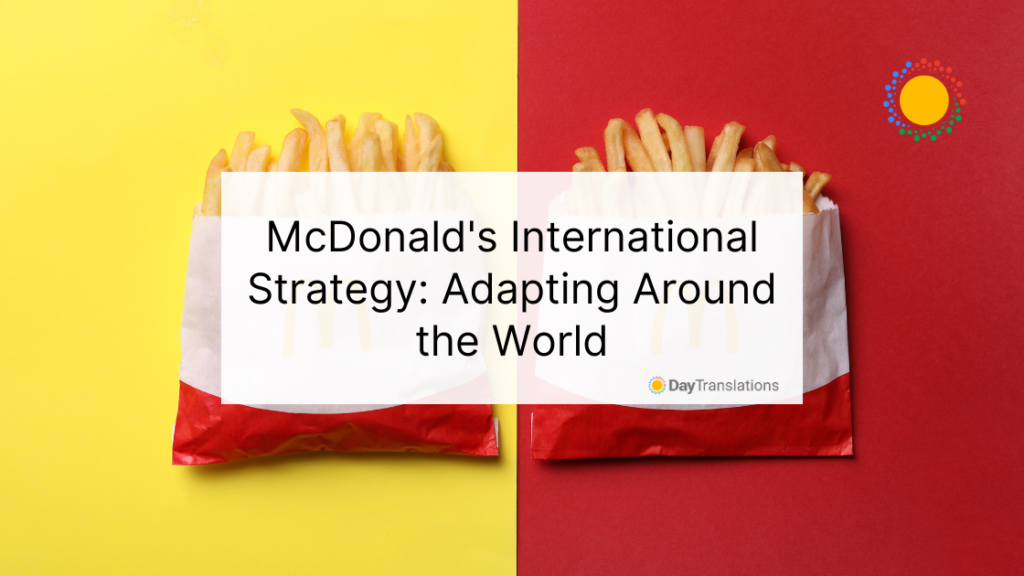
Brand Marketing Strategy in Turbulent Times: Lessons from Global Brands
Let’s face it: Your brand marketing strategy didn’t sign up for international drama. But here we are. One day, it’s a trade war; the next, it’s a regional conflict. Your product launch in Europe now depends on supply routes in Southeast Asia. Welcome to the new marketing reality—where geopolitics isn’t background noise, it’s front and center.
Leading brands aren’t just adapting, they’re evolving. They’re swapping out cookie-cutter campaigns for localised storytelling, turning supply chain tweaks into trust signals, and using AI for efficiency and emotional intelligence at a global scale. Why? Because resilience is the new relevance
In this piece, we’re decoding how savvy marketers are re-engineering their brand marketing strategy to stay ahead by being culturally fluent, politically aware, and data-led. From Coca-Cola to Tesla, from packaging to purpose, the rules of global branding are being rewritten. Let’s break it down.
How localization strengthens brand marketing strategy
One major shift in brand marketing strategy today? Brands are going local—on purpose. With rising geopolitical tensions, being perceived as foreign or out of touch can hurt brand perception. Companies are now tailoring marketing to represent local culture, values, and identity rather than promoting a consistent worldwide image. Here are a few examples:
The “De-Americanizing” Move: Because of trade difficulties in the United States, companies such as Kraft Heinz and Coke are blending in by employing local ingredients and creators. Kraft Canada’s recent ads proudly highlighted Canadian-grown ingredients and ran headlines like “Made in Canada, by Canadians.”
Coca‑Cola’s Local Touch: As of April 2025, Coca‑Cola is focusing on regional events, flavors, and community tie-ins to feel more culturally grounded.
Localization isn’t just smart PR—it’s a strategic move to connect emotionally and stay relevant. In short, brands are recalibrating messaging to reflect local values. Localization isn’t just PR—it’s a brand marketing strategy tactic to foster emotional connection and sidestep misperceptions.
Building brand credibility through supply chain resilience
Geopolitical instability has exposed supply chains as weak points. Astute brands, however, are also using this as a branding opportunity.
Marsh on Disruptions: A March 2025 report flagged heightened supply-chain risks tied to geopolitical protectionism. They urged firms to diversify beyond “connector” countries like Vietnam or Mexico, because policy risks jump around.
BCG’s Resilience Playbook: Boston Consulting Group recommends diversified sourcing, supplier relationship depth, vertical integration, and design tweaks—a full-on brand marketing strategy upgrade to ensure stability and deliver on promises.
This is about brand credibility, not just logistics. When brands guarantee product availability and consistent quality amid global chaos, that reliability becomes part of their identity.
Agile budgeting: Using data to strengthen brand marketing strategy
Due to unstable markets and erratic geopolitical changes, marketing expenditures now prioritize strategic accuracy over large, eye-catching campaigns. Every expenditure is scrutinized, and marketers are expected to prove ROI like never before. It’s no longer about how much you spend, but how smartly you spend it.
Top CMOs from Kraft Heinz, Diageo, and Arla Foods highlighted this precise change during the 2025 WFA Global Marketer Conference. They underlined that real-time analytics, AI-powered creative scoring, and scenario planning are essential for handling volatility without losing steam. The focus? Agility, flexibility, and data that drives every move.
In short, brand marketing strategies today don’t start with gut feelings or glossy visuals. They start with concrete facts, astute observations, and the capacity for quick adaptation. It’s marketing that has a backup plan built in, prepared for whatever comes up.
Purpose as a brand marketing differentiator
In tense geopolitical climates, consumers aren’t just buying—they’re judging. Price matters, sure, but purpose matters more. People want to know what a brand represents, particularly in times of uncertainty or division in the world.
That’s why brands are leaning into CSR and ESG more than ever. Consider Unilever, which increased its focus on sustainability and ethical sourcing while others backed off. The result? Increased consumer trust and long-term brand equity. Its purpose is as a pillar, not just a tagline.
Even global giants like Coca-Cola have changed their strategy. During the Israel‑Gaza conflict, Coca‑Cola took a strategic step back in markets like Pakistan, Malaysia, and other Muslim-majority countries. To lessen political blowback, they halted advertising in some areas, canceled well-known campaigns, and even swapped out Coke displays in select stores.
Purpose is no longer optional—it’s central to brand marketing strategy when audiences are divided or distrustful.
AI and analytics: The new core of marketing strategy
Geopolitics is unpredictable, fast-moving, and often emotionally charged. Technology can help with that, not only by automating chores but also by enabling businesses to respond swiftly while maintaining their fundamental human qualities. In a world where global headlines can impact brand perception overnight, speed and sensitivity are everything.

AI has become a key ingredient of marketing strategy in 2025. Deeper customer knowledge and more intelligent content creation are being fueled by tools like ChatGPT 4.0, Copy.ai, and Sprout Social’s predictive taggers. These platforms don’t just churn out copy—they analyze sentiment shifts, cultural trends, and emerging narratives in real time, helping marketers stay relevant without missing a beat.
At a macro level, the World Economic Forum has pushed for the adoption of “digital risk radars” to monitor geopolitical and trade developments. By combining marketing nimbleness with political data, these technologies enable firms to make proactive changes to their messaging or approach. To put it briefly, the most successful brand marketing tactics today combine cultural fluency and AI adaptability.
Brand strategy in action: Global examples of adaptation
In what ways are major brands changing the rules in real time? In order to negotiate the geopolitical fault lines of today, some of the largest names on the globe are modifying their brand marketing strategies as follows:
McDonald’s: In Europe and Canada, the brand faced an 8–10 point spike in anti-American sentiment. Instead of backing off, they doubled down on local cultural cues in campaigns to maintain relevance.

Gucci vs. Prada: A Bain & Co. study forecasts 2–5% decline in luxury goods in 2025 due to tariffs and instability—but Prada grew by 13%, while Gucci fell by 24%. Prada’s success stems from regionalized strategy and agility.

Brazil’s Petrobras: Petrobras made a strategic branding decision by freezing fuel prices to preserve consumer sentiment in the face of increased oil costs brought on the Middle East tensions.

Tesla & Apple: Apple shifted its supply chains from China to India, Mexico, and Vietnam to weather policy shocks. Meanwhile, Tesla saw declining global sales due to perceived U.S. alignment.
Proven tactics to future-proof your brand marketing strategy
This is a quick, brief guide to help brands deal with uncertainty around the world. Utilize this checklist to incorporate geopolitical intelligence into your brand marketing plan and future-proof it:
- Localize Your Message: Tailor imagery, talent, language, and sourcing mentions to region-specific sensitivity.
- Build Supply Resiliency: Plan for sourcing flexibility and lead with that reliability in communications.
- Balance Budget Using Data: Use real-time analytics and scenario modeling to optimize spend.
- Showcase Authentic Impact: Let CSR, ESG, and ethical stances be authentic anchors of messaging.
- Invest in Tech Radar Systems: Use AI for content + geo‑risk tracking to pivot messaging dynamically.
- Train Teams in Geo‑Sensitivity: Equip local marketers to tweak campaigns with cultural intelligence.
- Develop Scenario‑Driven Campaign Bundles: Pre-create assets that can be quickly deployed in shifting geo-contexts.
These tactics form the scaffolding of a brand marketing strategy that’s flexible, trusted, and resonant worldwide.
Turning geopolitical risk into brand growth strategy
Bottom line: geopolitical friction isn’t just a threat—it’s a chance. Brands can create lasting relationships, encourage loyalty, and establish enduring reputations by stepping up and responding with purpose, agility, and data awareness.
Brands can turn uncertainty into strategic fuel by adopting localization, supply-chain resilience, quantifiable strategies, ethical stances, and AI-backed knowledge.
Bring your campaigns into this reality. Let world events inform your next brand marketing strategy, not derail it.
Cut to the chase
Let’s be honest, global chaos isn’t going anywhere. But neither is your quarterly growth target.
That’s why the smartest brands aren’t bracing for impact; they’re building brand marketing strategies that flex with the headlines. They’re local when it matters, loud when it counts, and silent when that’s the smarter move. They’ve got AI watching the sentiment shifts while their supply chain team doubles as a trust engine. Purpose is the main storyline.
Bottom line? You can’t firewall your brand from geopolitics. But you can turn it into a strategic advantage. So don’t just brace for the next disruption, build for it. Because in 2025, survival is reactive. But relevance? That’s strategy.


